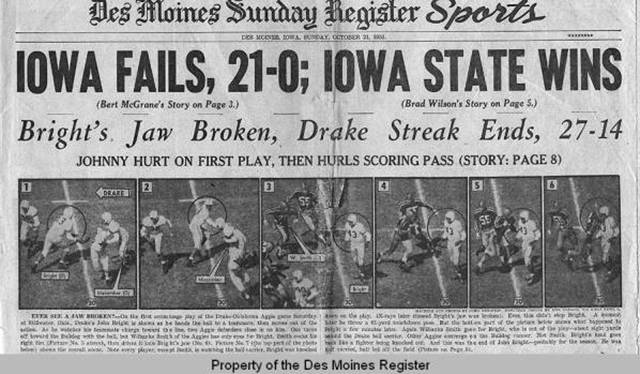1952: John Robinson and Don Ultang – “Sequence of Six Pictures.” In 1951, racial tensions remained high in the United States and were spilling into the racially-integrated world of college football. Johnny Bright was one of the first black players. Bright’s future seemed assured when in his senior year, he was on the short list for Heisman Trophy candidates. Playing for Drake University in the game against Oklahoma A&M, Bright was repeatedly violently attacked by white players including defensive tackle Wilbanks Smith, who used racially derogatory language against Bright and incited his teammates to target Bright. In a series of aggressive tackles during the first seven minutes of the game, Bright was knocked unconscious three times. In the final hit from Smith, Bright’s jaw was broken. Because of the injury, he was forced to leave the game. A series of six images taken by cameramen Don Ultang and John Robinson clearly showed that the hits against Bright were made long after the hand-off of the football. The two photographers had decided to focus on Bright because of the rumors of him being targeted, and the effort was well worth it. Because of these direct assaults, the NCAA changed the rules about protective gear and declared that all players must wear protective helmets with faceguards. The series of photos was published in the Des Moines Register, eventually made the cover of Life Magazine, and won them the 1952 Pulitzer Prize for photography.




B*tch.